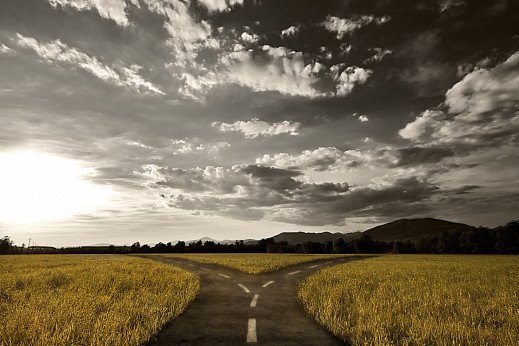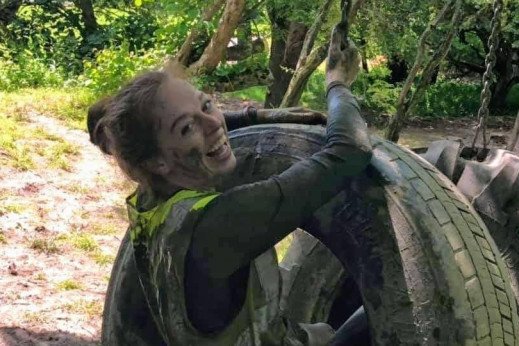Following about 25 – 30 admissions to psychiatric wards and eating disorder units, I have been out of hospital for a whole year. I recently went to give a talk at an EDU, and was introduced as ‘A recovered person’. I thought to myself, wow. Really? Here I am: recovery!
My illness began nearly 19 years ago, after I fell off a horse and had a very serious brain injury. My mind’s consequent injury, in its reaction to the TBI, led to an ‘expression’ of misery and pain, through numerous diagnosed (and misdiagnosed) illnesses: anorexia, self-harm, suicide attempts, psychosis, schizoaffective disorder, schizophrenia, hallucinations, depression, anxiety, personality disorders, eventually ‘organic hallucinosis’. I could go on.
Finally, I learnt how to get well, how to be well. This is something I have to commit to each and every day. A day at a time, I lay foundations, and I begin to build my very own, brand new life. Being creative has been my most potent, powerful, effective medicine. I developed what I called ‘colour painting’. When I was in hospital, I’d paint all day, every day. I went through phases: with long agonising periods when I would paint dark, scratched, disturbed expressions of sheer torment, stark black on tired paper. Black was my fatal accomplice.
Then, one day, I decided that there are still some things that I want to do in this world. I said to myself: I don’t want to feel this pain. I miss cuddles with my dearest darling dog, Foxy; I miss riding the horses; I miss liquorice tea; I miss gallivanting across country and doing competitions; I miss lots of things. I have ambitions; I want a future. I wanted colour.
That very moment, I opened the ‘Artists’ Carry Box’ I had (optimistically!) brought to the ward with me, and searched for some new pigments, other than the black (which had, in fact, run out through overuse). I had a full ‘assorted pack’ of twelve Brusho Crystal Colours. These magic little pots contain brilliant, intense, transparent granules of pigments for painting.
I take out yellow. Bang. The hue opens my eyes; it lightens my view. I know what to do. I slop some water on a page of thick, textured paper, and sprinkle on a few crystals. They expand, instantly emanating and stretching into rivers of brilliant yellow. This colour is plural: in the middle of the paper, the heart opens out in an intense, dense orange; as it disperses across the page, it became a rich cadmium, then a lemon yellow. In sum, the piece offers me a vivid vision of sunshine.
This I take. I breathe in, as my eyes dance across the colours cascading in front of me. I breathe out, and let go of their antithesis (the darkness). Such meditation continues for some time. Soon enough the paint dries and I prop it up on my chest of drawers. Quickly, I do another, and another.
After a couple of days in this routine, my room in the ward has become furnished, and flourishes, with radiant bright colours. Now, I see in yellow, red, blue, green, purple. The black is at the back, still there, but out of view. This is my aim: to keep the colours at the front. I can’t get rid of the darkness (it bears scars, of deeply rotten trauma, on my body), but I can see, and feel, in light now. This facility, this change, is fundamental to my recovery and for the new life I am leading.
Colour painting can’t solve everything. But it can make me feel better, so I can facilitate my own change. I am more stable now than ever before. I like to think of my recovery as a bench I can sit on, which will support me when I need to sit down and rest—in the midst of life’s continual tests. This is not an easy, pain-free journey; recovery is an ongoing process. When I was at the lowest point of my life, about ten years ago, I said to myself ‘It can’t get any worse.’ It was that bad. However, I realised that this was a positive statement. If it can’t get any worse, that means it can only get better. Then, I managed to turn my pain around, and think about how on earth I could make my life better. For this I needed help. It took many years, and many further hospital admissions, but finally here I am, as, quote: ‘A recovered person’.
Contributed by Lorna
What happens when you start to feed your brain again?
5 May 2021You have to learn how to live again and, like with any lessons, you often have to fail to learn the best way or the right way...
"Things can improve, even when it feels hopeless"
29 April 2021In the past I’ve wanted to hide the eating disorders that are part of my history, but I want to shout from the rooftops: I'm proud of how far I had come!
"This year has taught me to be kinder to myself"
21 December 2020What a year 2020 has been in general for everyone – it was a year no one ever could have imagined, from panic buying, toilet roll shortages, lockdowns and restrictions. Yet for so many, including me, the battle against an eating disorder continued.


